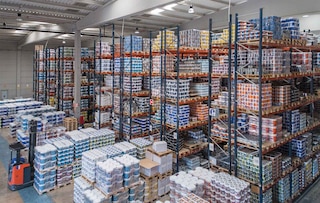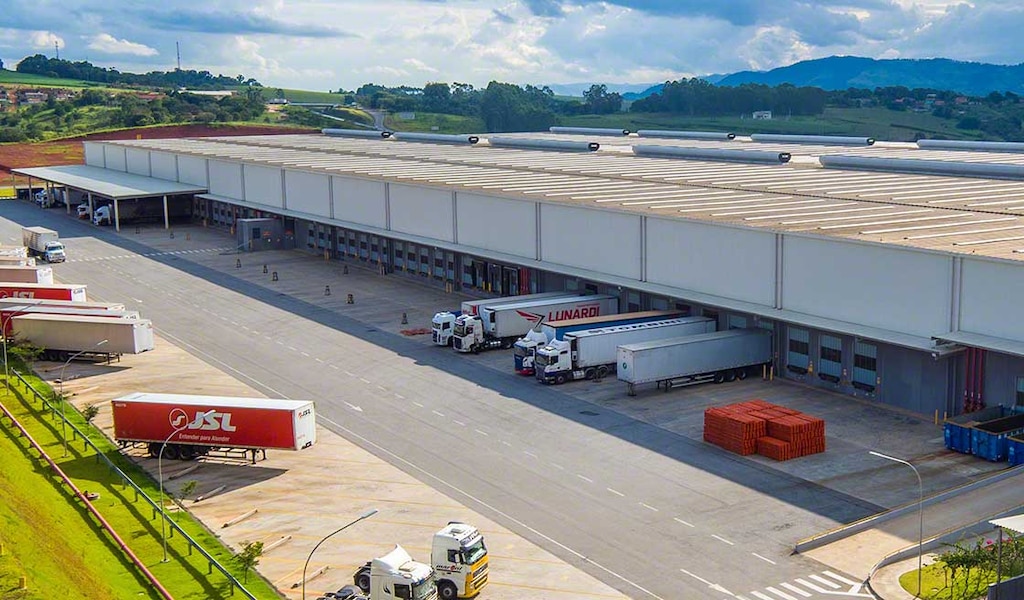
Supply chain: what is it? Definition and differences from logistics
The supply chain is the process generated from the time the customer places an order to the moment the product or service has been delivered and charged. Thus, the supply chain encompasses the planning, execution, and control of all the activities related to material and information flows. It spans the purchase of raw materials to the final delivery of the merchandise to the customer, including the intermediate processing of the goods.
Consequently, the supply chain can be defined as the set of steps and networks that come into play from the product’s origin to its arrival in the hands of the end customer. This chain is made up of various suppliers and businesses whose role is to feed the next link.
Nowadays, supply chains are extremely complex due to internationalization, increases in types of flows, and changes in overall consumption models.
Supply chain stages
The supply chain consists of three main phases:
- Procurement refers to how, where and when raw materials for the manufacture of products are sourced and supplied.
- Production comprises the processing of raw materials, resulting in finished products.
- Distribution involves the activities that enable goods to arrive at their final destination. This is achieved through a network of distributors, warehouses, physical stores, and/or online platforms (in the case of e-commerce businesses).
The supply chain is also known as the value chain, as the products acquire greater value as they advance through its links. One of the main nodes supporting this chain is the warehouse, as seen in our article on warehousing logistics.

Differences between the supply chain and logistics
We’ve seen the definition of the supply chain, but: what’s logistics? And how does it relate to the supply chain? Generally speaking, the supply chain refers to the complete flow of a product until it is sold. Logistics, in turn, forms part of the supply chain. It’s a discipline centered on the storage, transportation, and distribution of products.
As such, logistics is the business area responsible for making sure the correct product arrives at the designated destination by the specified time, in the right amounts and with the required cost and quality — always in line with the conditions previously agreed upon with the customer.
Let’s take the simple example of a furniture store: this company’s logistics would be geared towards the acquisition of different types and models of furniture to put on display on the premises as well as pieces ordered by customers.
These will be stored in the warehouse until they are transported. The store’s logistics manager will design the delivery routes for the furniture, bearing in mind the assembly tasks performed upon delivery to the end customer.
However, the furniture supply chain covers all the stages the product has gone through, back to the extraction of the wood, its processing into boards and pieces at the furniture factory, its subsequent distribution to points of sale, and its final transportation to the customer’s home.
The table below shows the differences between logistics and the supply chain:
| Supply chain management | Logistics management | |
|---|---|---|
| Definition | The overall product supply process. It refers to the cooperation between manufacturers, suppliers, distributors, business partners and consumers. | The part of the supply chain comprising management of the warehouse and of internal and external transportation flows, from supply to final delivery. |
| Objectives | Obtain maximum market competitiveness and optimize profits. | Achieve customer satisfaction through perfect order management. |
| Businesses involved | Generally, various organizations participate in a single supply chain. | This can be managed entirely via the company itself. |
| Relationship between both | The supply chain refers to the complete ecosystem, to the set of processes through which a product goes. | Logistics is a subset of the operations forming part of the larger supply chain. |
| Business areas involved | Product development, quality control, customer service, and logistics activities, among others. | Primarily storage, transportation, and stock management. |
Supply Chain 4.0 trends
Supply chains are shifting towards a logistics environment that’s faster and more flexible, personalized, accurate, and efficient. As we explained in our article on Logistics 4.0, new digital technologies and automation are shaping the new supply chain model. So, what elements define the Supply Chain 4.0 concept?
1. Need for technology to gather and manage data
With more extensive and complex supply chains, information management has become essential for being able to cope with market demands. In this vein, it’s key to ensure:
- Data accuracy in stock management: with more and more SKUs stored, having exact inventory data allows you to not only maximize stock in your installation, but also guarantee a high level of service, avoiding those undesirable stockouts. This is achieved thanks to the use of warehouse management software that facilitates stock control.
- Goods traceability: in navigating across global supply chains, logistics traceability has proved to be an exceptional control tool for managing both internal and external material flows. Maintaining a traceability system is only possible because of labeling technology with barcodes or RFID tags, data capture devices, and software that manages the information shared along the supply chain.
- Exhaustive KPI monitoring: programs such as Interlake Mecalux’s Supply Chain Analytics Software enable you to monitor all the activity that takes place in the installation and its relationship with the rest of the links in the supply chain. This ensures that these operations don’t hinder intralogistics flows.
2. Increased integration between the various supply chain stakeholders
The strategy for choosing supply chain partners is becoming more focused on removing barriers between suppliers and establishing relationships based on cooperation.
This is done through the standardization of processes and the joint planning of activities. The use of advanced data management software is vital in order to stop operating separately and approach the supply chain from an overall perspective.

3. Process automation strategies for enhanced accuracy and speed
The industrial automation implemented in manufacturing and product processing operations has made the jump to the supply chain and is present throughout the various areas of logistics:
- Installation activity management: warehouse management systems have facilitated the organization of activity and available inventory in increasingly complex facilities. In this sense, they play a significant role in optimizing order preparation tasks, together with devices such as voice picking and pick-to-light tools. All of this has boosted per-hour and per-operator picking ratios and practically eliminated all errors.
- Automated load transportation in intralogistics processes: automation projects are often centered around goods movements, given the great advantages automation brings to these operations. In fact, nowadays, robotized warehouses use all kinds of automated systems to speed up goods flows and improve safety in the installations.
- Transportation route management: fleet management software is crucial for coordinating the distribution of goods throughout the various nodes in the supply chain. These systems allow you to organize routes based on logistics parameters (delivery dates, for example) and also include strategies such as goods consolidation and groupage.
Effective supply chain management is inconceivable without the optimization of companies’ logistics operations. As we’ve seen, these two concepts are more interrelated than ever, and their objectives must be aligned in order to contribute to business profitability. At Interlake Mecalux, we can help you determine and reach your logistics goals from a warehouse management standpoint: don’t hesitate to contact us.
